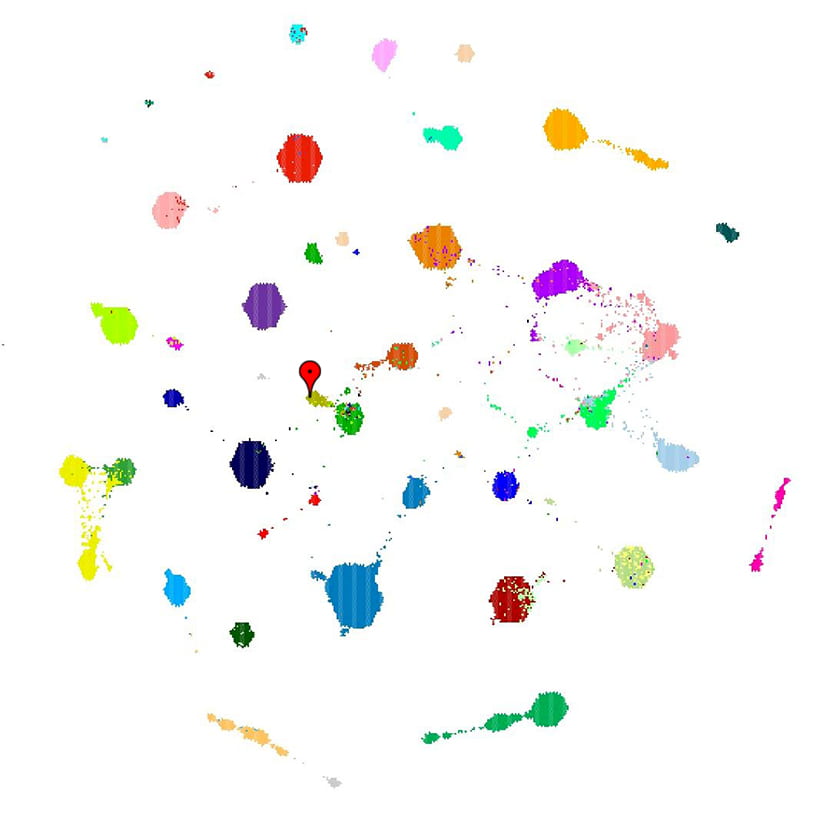What happens when we perform a genomic analysis of a person’s cancer?

A tool that plots individual tumors as dots that cluster together, forming a topology of genomic similarity. Researchers can make inferences about a particular tumor based on where it sits on the map.
Tumor Map

Analysis of Patient TH_005
in the context of thousands of tumors

Bird’s eye view (tumors colored by disease)

Zoom in on the glioma region (tumors now colored by grade)
 Zoom in on the glioma region (tumors now colored by gliona subtype)
Zoom in on the glioma region (tumors now colored by gliona subtype)“ The DNA and RNA tell us different things (changes to letters on the one hand, and how often genes are activated on the other), but the first step in getting answers from files is the same: Take each set of 100-200 letters and find the most likely source position among the 3.2 billion letters in the human genome reference. This is not unlike taking your copy of the complete works of Shakespeare (your genome), shredding it (sequencing it), and trying to match the shreds up to the library’s copy of the book (the human reference genome). Most parts are the same, but often there are small or large differences between the shreds and the library’s book, similar to what you’d find if it was a different edition.”
Unlike one person comparing shreds of their book to the library’s copy,
The first step is to look over all the shreds that were matched to the library book and see where they differ. Sometimes it’s a one nucleotide change, the equivalent of a spelling difference. A change in spelling may change the meaning (bit vs bat) or not (color vs colour). Similarly, changes to DNA can have a major effect, a minor effect, or no observable effect. The changes can be on a bigger scale, like missing or added words, or missing or duplicated chapters. Even among those larger scale changes, some have large effects and others don’t. The bioinformatician makes a list of the changes predicted to be important and indicates which ones have a known meaning or (better) are known to respond to a certain treatment. A cancer biologist then considers this information in the context of everything they know about various kinds of cancer.
